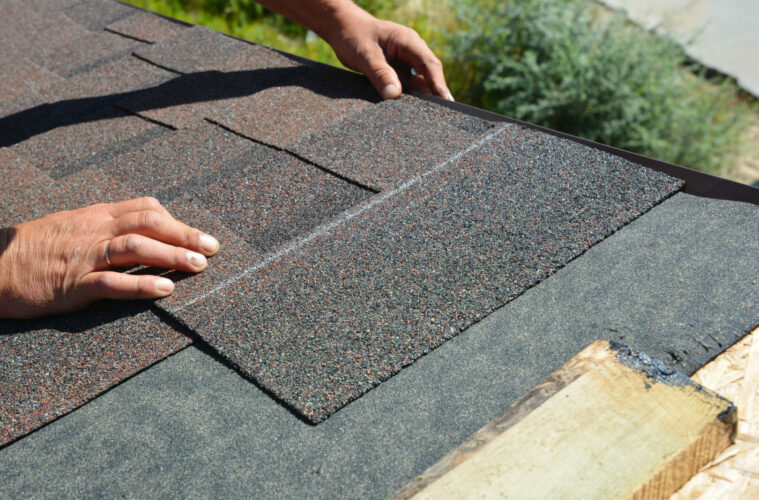Choosing a new top for your house is a big decision for any homeowner. Metals like steel, zinc, and copper are catching on for their strength, long life, and energy-saving properties. Yet, each type has its own set of strengths and weaknesses, especially in how it deals with weather, upkeep needs, and noise levels in bad weather. Here’s a brief rundown of what to expect from the most popular options.
Metal Roofing
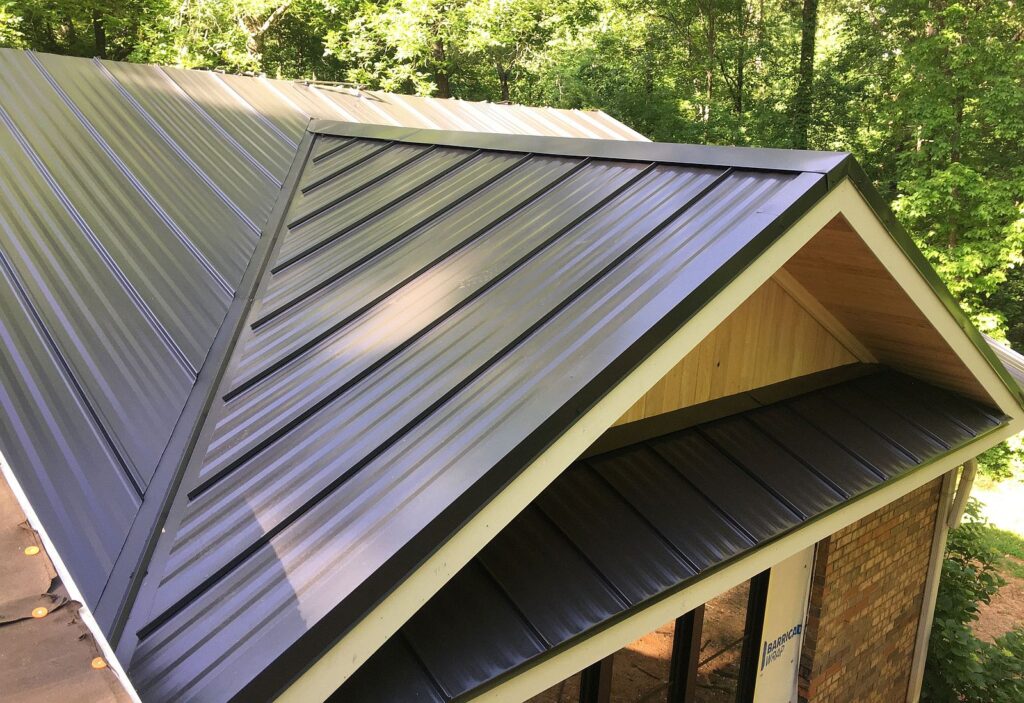
source: woodstockmetalroofing.com
Metal, a solid option for both residential and commercial buildings, stands out for its durability, weather resistance, and range of looks. Technological improvements have boosted the performance of these materials, making them a wise choice despite a higher initial cost compared to traditional options. Their longevity and energy efficiency can make them a cost-effective choice in the long run.
When it comes to installing a roof, selecting the right metal roofing contractor is crucial. Metal roofs are renowned for their versatility, offering a range of styles including standing seam, tiles, and shingles. These can be crafted to mimic the look of traditional materials like wood shakes, clay tiles, or slate, providing both aesthetic appeal and the inherent benefits of metal.
Pros:
- Durability: Exceptionally resilient, metal can withstand extreme conditions like torrential rains, hailstorms, and strong gusts.
- Lifespan: Properly installed metal can protect your home for 40 to 70 years, surpassing many other materials.
- Energy Savings: Reflecting sunlight, metal helps lower cooling expenses and is an environmentally friendly choice.
- Low Upkeep: Metal stands out for its minimal maintenance requirements, offering savings on time and costs over its lifetime.
Cons:
- Initial Expense: The upfront cost of metal may be higher, but its durability and minimal upkeep can make it a worthwhile investment.
- Sound: Metal may produce more sound during rain or hail, but this can be lessened with the right insulation.
- Thermal Movement: Metal’s expansion and contraction with temperature shifts could impact its function over time if not installed correctly.
- Quality Differences: There’s a wide range in the quality of metal materials, making it important to select trusted brands and skilled installers.
Cedar Roofing
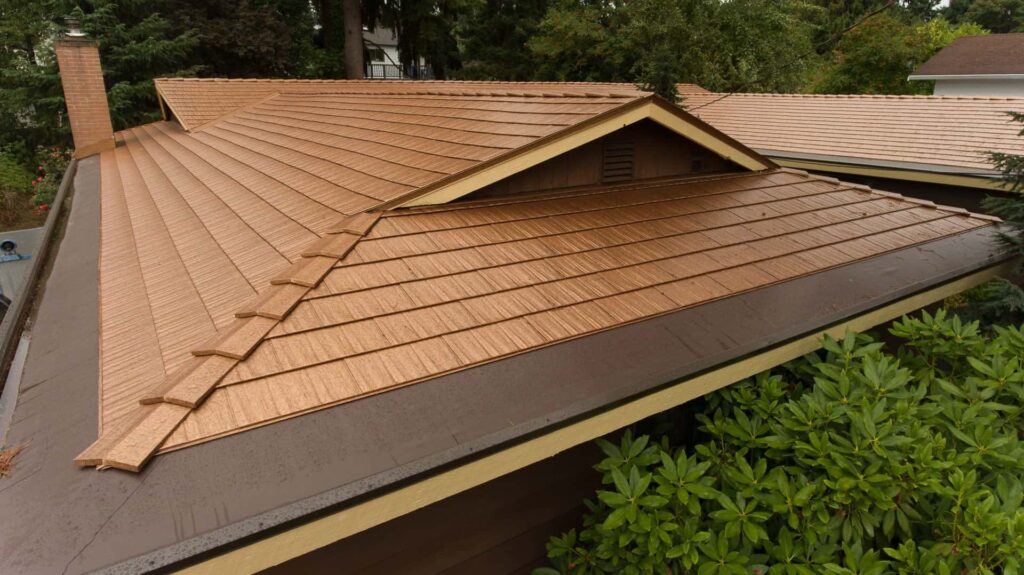
source: interlockroofing.com
Cedar roofing provides a beautiful, natural look. As a lightweight softwood, cedar is easy to install and requires minimal framing reinforcement. Cedar is naturally rot and moisture-resistant thanks to its natural oils. With proper installation and maintenance, a cedar roof can last 30–50 years. Cedar roofing does come at a higher upfront cost than alternatives.
Cedar shingles and shakes are available in different cuts and styles. They provide a rustic, wood-grained appearance well-suited to many home styles, especially in forested areas. Cedar’s natural oils also act as a mild fire retardant. Overall, cedar offers an attractive, long-lasting natural roofing material.
Pros:
- Natural appearance. The wood grain and colour of cedar shingles or shakes provide a rustic, organic look that blends nicely with natural surroundings.
- Lightweight. Cedar is a lightweight softwood that is easy to cut, nail, and shape during installation, which can reduce overall roofing labour costs.
- Rot-resistant. The natural oils in cedar wood act as a preservative that resists rot, decay, mould, and mildew over time, giving cedar good longevity.
- Mould resistant. In damp climates, cedar’s natural oils help prevent discoloration or damage from mould or algae taking hold on the roof.
- Long lifespan. With periodic sealing, staining, and upkeep, a cedar roof can last upwards of 50 years before needing replacement.
- Fire retardant. The natural oils in cedar also provide some fire resistance and self-extinguishing properties, though additional chemical treatment is still required.
Cons:
- Expensive upfront. Cedar materials cost significantly more than asphalt or steel materials upfront. This higher initial investment should be weighed against the benefits.
- Requires sealing. To achieve its full lifespan, cedar needs to be sealed and stained every 2–3 years to protect against moisture, rot, and UV damage.
- Combustible. Cedar roofs need to be treated with chemical fire retardants to reduce the combustibility of the wood per building codes.
- Shorter lifespan. With proper maintenance, cedar lasts 30–50 years, compared to 40–70 years for metal roofs.
- Prone to splitting. Cutting cedar shingles too thin or using improper nailing techniques can lead to cupping or splitting over time.
- Depleting oils. The natural oils in cedar deplete slowly over decades, making it more susceptible to rot and decay later in life.
Concrete Roof Tiles
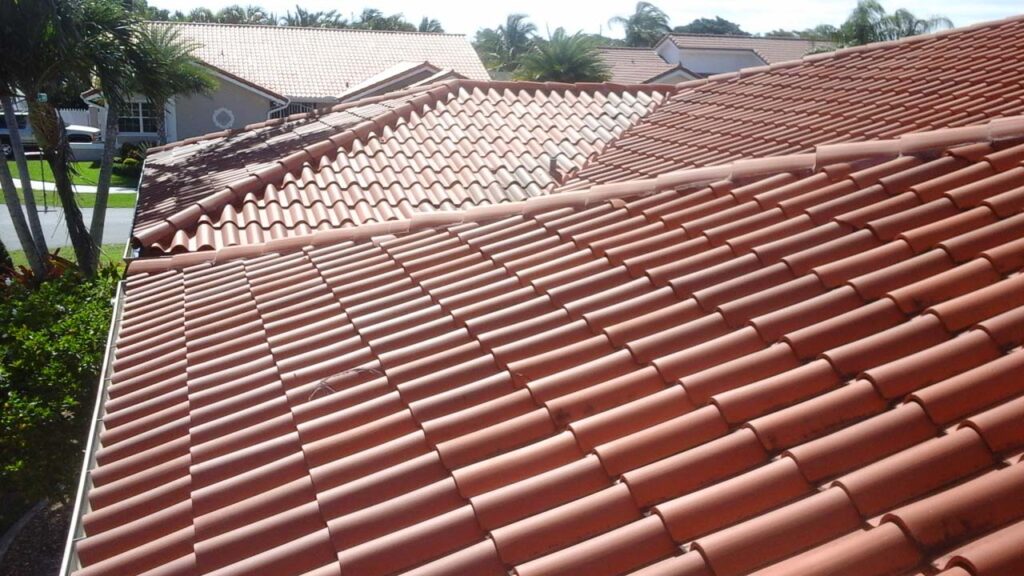
source: rausabuilders.com
Concrete roof tiles bring a blend of durability and versatility to roofing, making them a popular choice for a variety of architectural styles. Made from a mixture of cement, sand, and water, these tiles are then moulded under high pressure and heat to create a hard and dense tile. Concrete tiles can mimic the appearance of traditional clay tiles, wood shakes, or slate, offering homeowners a range of aesthetic options without sacrificing strength.
Pros:
- Strength: Concrete tiles are known for their exceptional durability, capable of withstanding harsh weather conditions including heavy rain, hail, and high winds.
- Cost-effective: While offering similar aesthetic and durability benefits as more expensive materials, concrete tiles are generally more affordable than their clay counterparts.
- Low maintenance: Once installed, concrete tiles require minimal upkeep, aside from occasional cleaning to remove debris and moss.
- Energy efficiency: The density of concrete provides good insulation properties, helping to keep homes cooler in summer and warmer in winter.
- Longevity: A well-installed concrete tile roof can last for 50 years or more, with some manufacturers offering warranties that reflect this lifespan.
Cons:
- Weight: Concrete tiles are heavy, requiring a solid structural foundation to support their weight. This may limit their use in some renovation projects or require additional structural reinforcement.
- Colour fading: Over time, the colour of concrete tiles may fade due to exposure to the elements, particularly in areas with intense sunlight.
- Moisture absorption: Concrete is more porous than clay, meaning it can absorb water and potentially lead to mildew or moss growth if not properly maintained.
Asphalt Roof Shingles
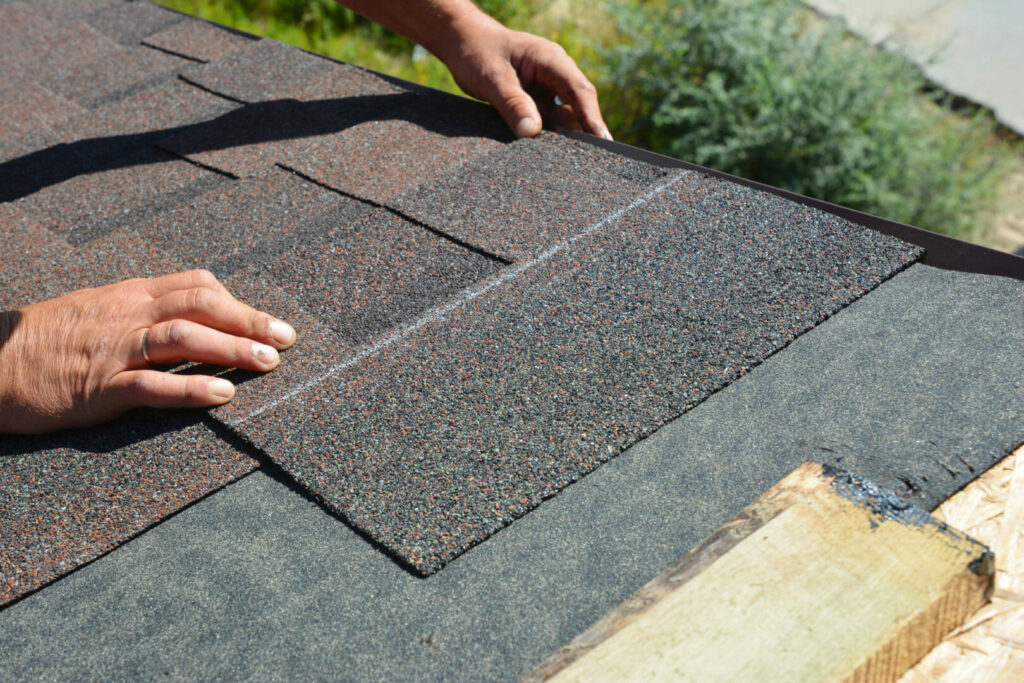
source: ghclark.com
Asphalt shingles are the most common and affordable roofing material for homes. They come in a wide variety of colours and styles to fit any home. Asphalt shingles are easy to install, requiring no special skills. Their average lifespan is more than 20 years.
Asphalt shingles are made from a fibreglass mat or organic paper soaked in asphalt and coated with mineral granules. The asphalt provides waterproofing while the granules protect from UV rays. Asphalt shingles require little maintenance beyond occasional moss removal. Overall, asphalt roofing provides an inexpensive, versatile, and easy-to-install option.
Pros:
- Affordable. Asphalt roofing costs a fraction of most other roofing materials, making it accessible to nearly any homeowner.
- Variety. Asphalt shingles come in common colours like black or grey but also offer more unique hues like purple, blue, or red, in matte, gloss, or textured finishes.
- Easy installation. Asphalt shingles are simple to cut, nail in place, and seal using basic roofing tools that most DIYers would have on hand.
- Low maintenance. Unlike wood or metal, asphalt shingles don’t require regular sealing, staining, or painting to prolong their lifespan.
- Readily available. The ubiquity of asphalt roofing means homeowners can easily purchase shingles and tools from local building supply retailers.
Cons:
- Shorter lifespan. On average, asphalt shingles will need replacement after 20–30 years, whereas metal or tile roofs can last upwards of 50 years.
- Not impact resistant. Asphalt is prone to damage from severe hailstorms or falling debris that would bounce off a steel roof.
- Absorbs heat. The black colour and composition of asphalt absorb and retain heat, which can increase air conditioning bills in hot climates.
- Not recyclable. Composite asphalt shingles are difficult to recycle and usually end up in landfills after tear-off.
- Vulnerable to weather. Improper nailing or seam sealing during installation makes asphalt shingles vulnerable to being damaged or blown off by severe weather events.
- Noisy. Standard asphalt shingles transmit more sound from rainfall or hail compared to other dampening roof materials.
Clay Roof Tiles
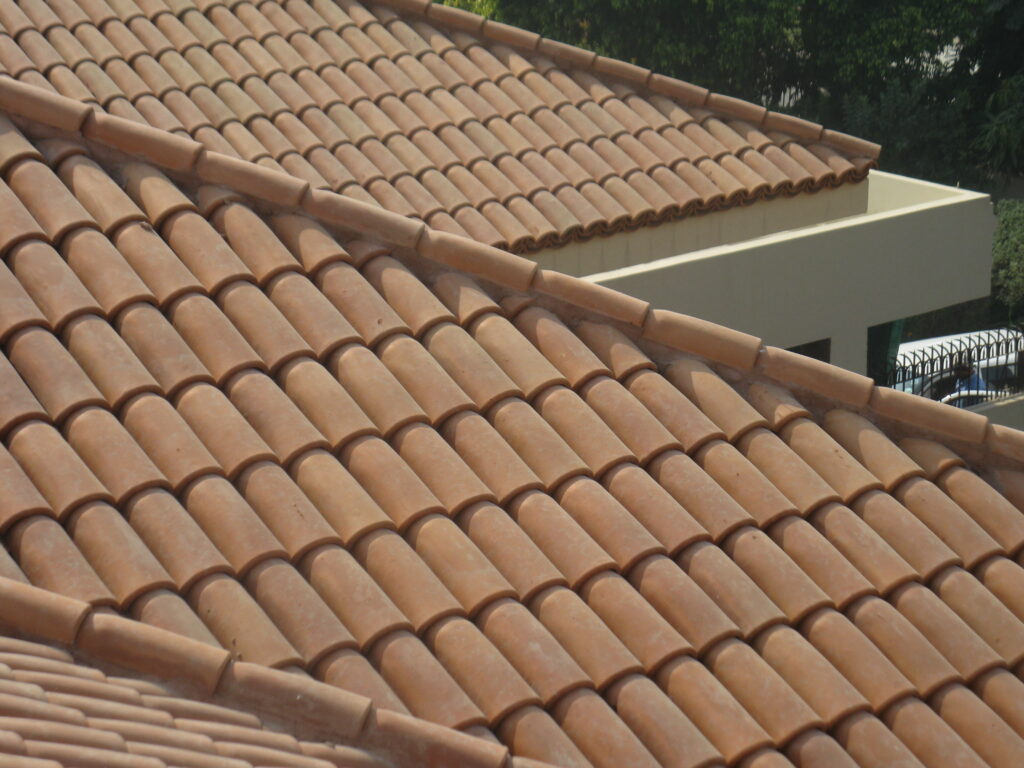
source: clayrooftiles.com.pk
Clay roof tiles are prized for their natural beauty, long-lasting durability, and ability to provide a classic or contemporary look to buildings. Made from natural clay that is fired in a kiln, these tiles offer a colour and texture that is inherently tied to the earth, often becoming more visually appealing with age.
Pros:
- Aesthetic appeal: Clay tiles offer timeless beauty, with natural variations in colour and texture that cannot be replicated by synthetic materials.
- Long lifespan: Clay tiles are extremely durable and can last over 100 years with proper maintenance, making them a once-in-a-lifetime investment for many homeowners.
- Fire resistance: Being made from fired clay, these tiles are non-combustible and provide excellent protection against fire.
- Thermal efficiency: Clay has natural insulating properties, keeping homes cooler in hot climates and reducing energy costs.
- Sustainability: Clay tiles are made from natural materials, making them an environmentally friendly roofing option.
Cons:
- High cost: The process of sourcing natural clay and firing the tiles makes clay roofing one of the more expensive options.
- Weight: Like concrete tiles, clay tiles are heavy and require a strong roofing structure for support.
- Fragility: While durable in terms of weather resistance, clay tiles can be brittle and prone to breaking if walked on, requiring careful handling during maintenance or repairs.
- Installation expertise: Proper installation of clay tiles requires skilled professionals, adding to the overall cost of a clay roof.
Summary
The type of material a roof is made of has a significant impact on its performance, durability, appearance and cost. Consider climate, budget, noise levels and style preferences when selecting different roof types. Proper installation and underlayment also help maximize the benefits of roofs. Consult with a roofing professional to choose the best roofing option for your home.

